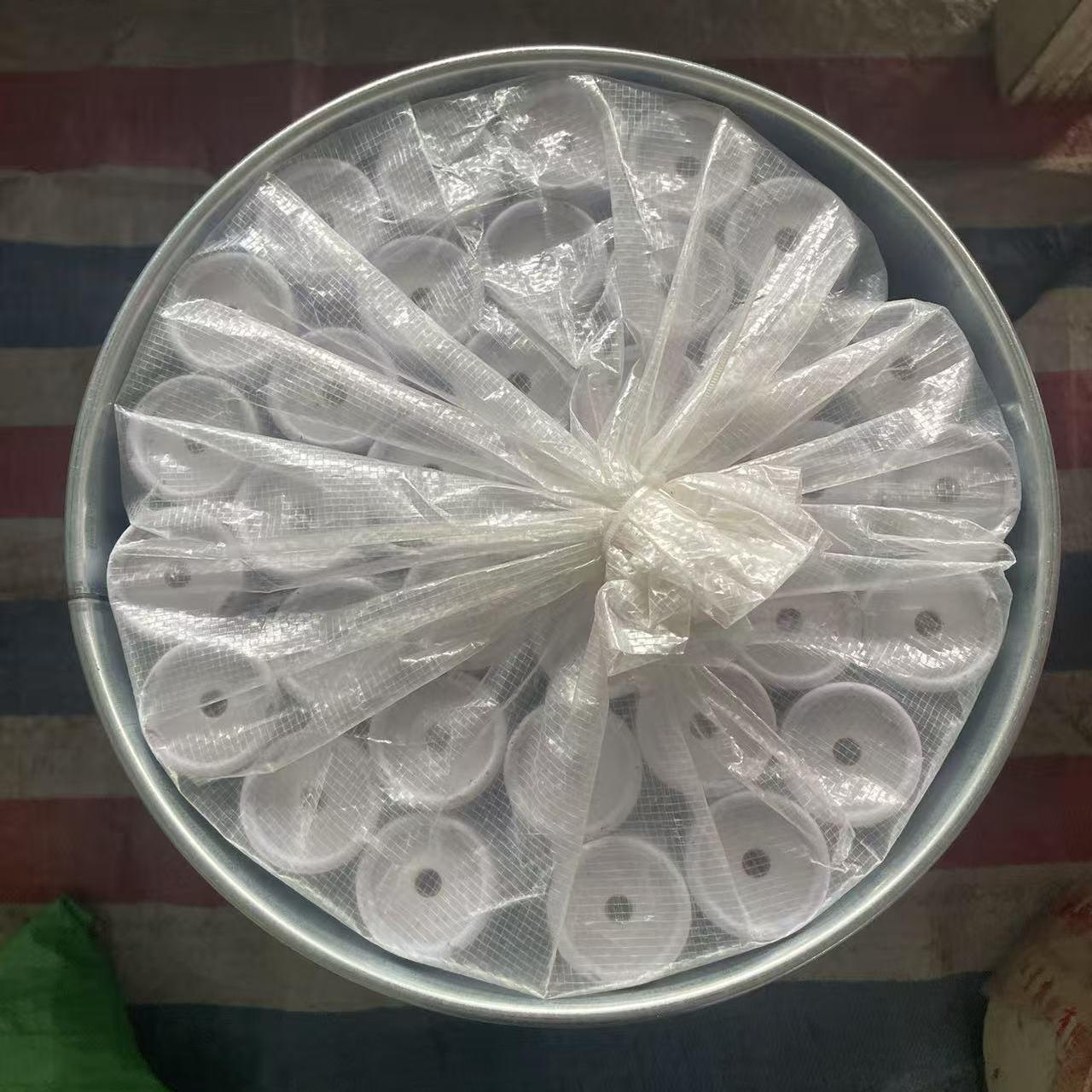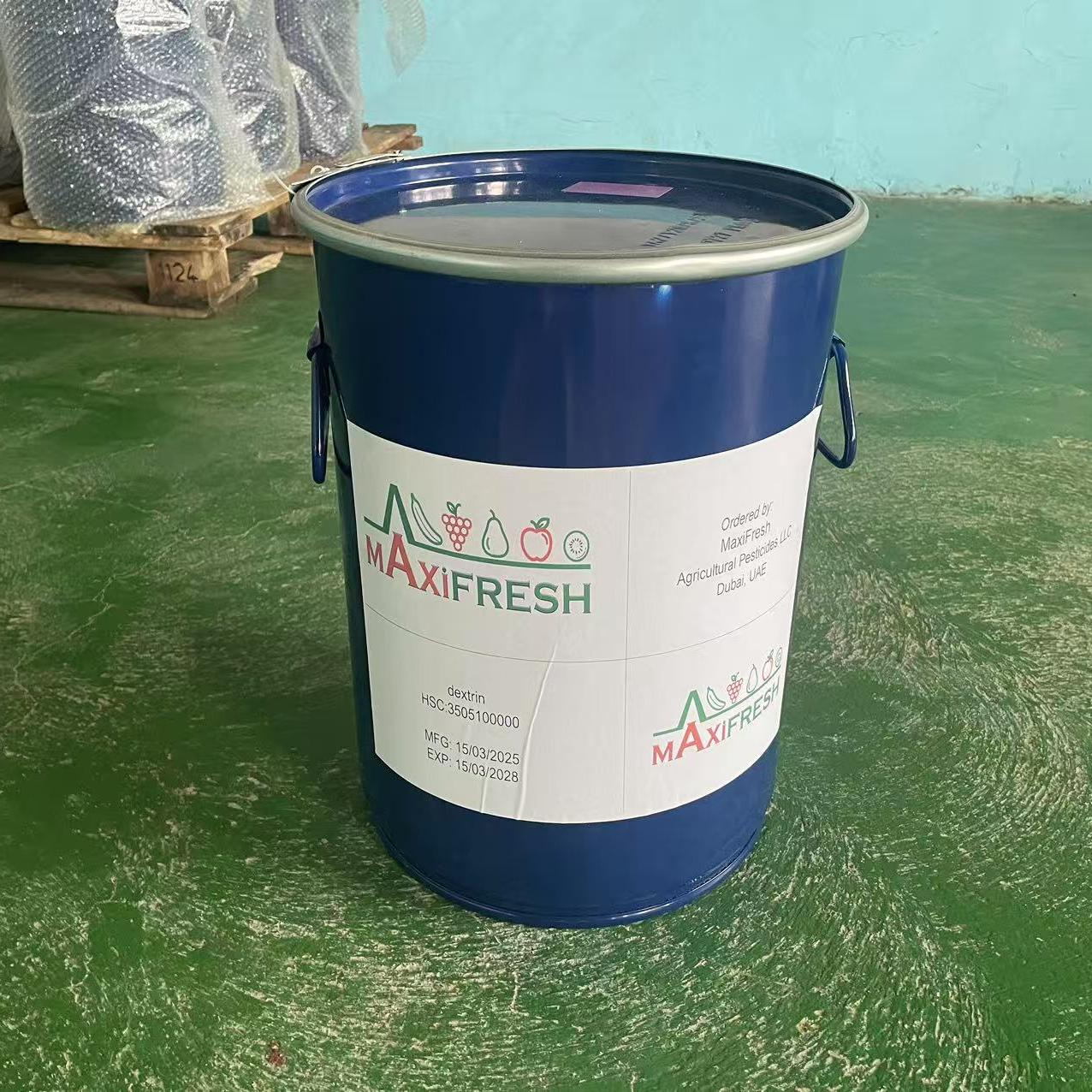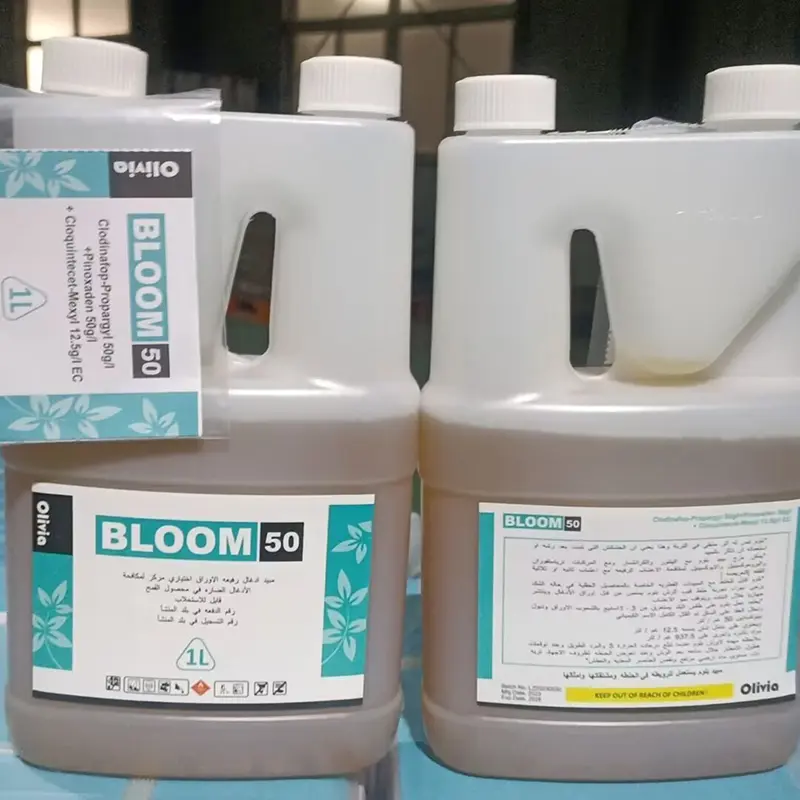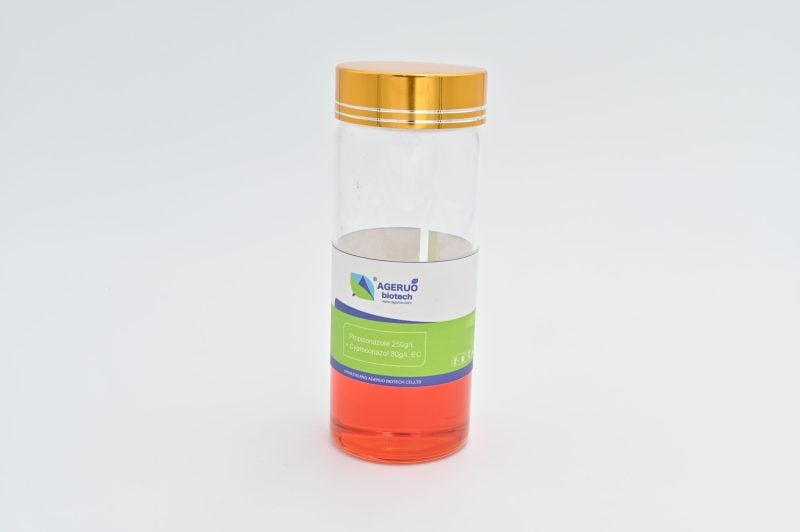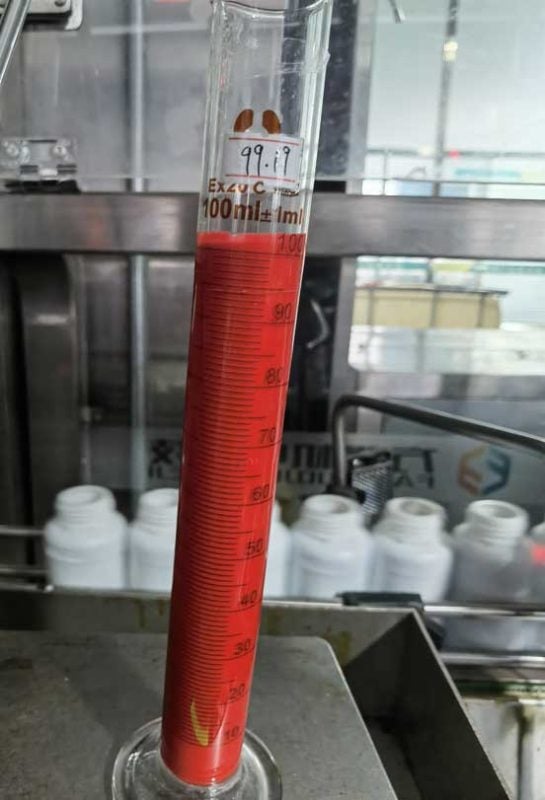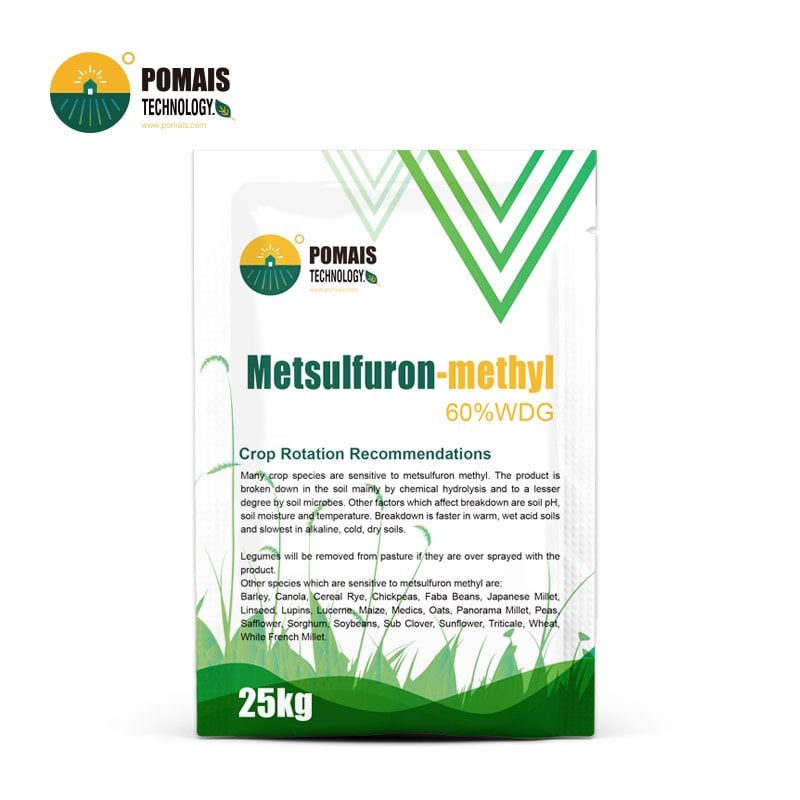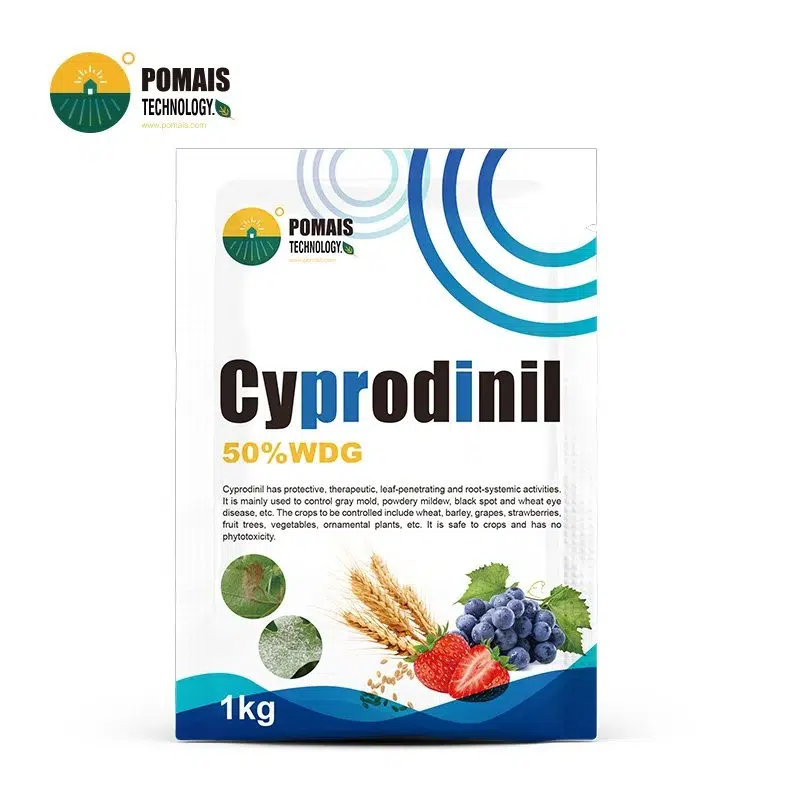Dodine 25% Greenhouse Smoke Generator (FU)
A FRAC U12 guanidine fungicide engineered for enclosed greenhouses. This smoke generator delivers uniform coverage into canopy shadows, supporting preventive and eradicant disease control with low labor deployment—ideal for night-time cycles. Follow label-defined exposure, ventilation, and re-entry intervals. OEM labels and full documents (COA/MSDS/TDS) available. Always follow the product label and local regulations.
- Designed for Professional Buyers & Bulk Orders
- This product is available for business purchase and large-scale distribution.
- We support custom packaging, labeling, and formulation to meet your market needs.
- Let’s build your brand together.

About Dodine 25% Greenhouse Smoke Generator (FU)
About Dodine 25% Greenhouse Smoke Generator (FU)
| Active Ingredient | Dodine 25% w/w |
| Formulation Type | FU — Greenhouse Smoke Generator (enclosed structures only) |
| FRAC Group / MOA | U12 (guanidines) — membrane & energy-disruption fungicide |
| Intended Use Site | Greenhouses, tunnels, nursery rooms (where registered) |
| Coverage per Unit | Label-defined m³ per canister; select small / medium / large to match house volume |
| Ignition Method | Self-contained wick / heat-ignition (specified on pack) |
| Exposure & Ventilation | Label-defined exposure window, then forced ventilation; observe re-entry interval |
| Operational Cycle | Ignite → seal → expose → ventilate → re-enter (per label SOP) |
| Documentation | COA / MSDS (SDS) / TDS provided with each lot |
| OEM Options | Private label, multilingual artwork, barcoding/QR, tamper-evident seals |
| Packaging | Metal canisters with heat-resistant liner; outer cartons and palletization notes available |
| Storage & Shelf Life | Original sealed container, away from heat/sparks; see label/SDS |
Dodine 25% Greenhouse Smoke Generator (FU)
What you get
You are deploying a Dodine 25% greenhouse smoke generator (FU) designed to fill enclosed structures with an even, penetrating fog. The smoke reaches canopy shadows, truss joints, and frame recesses that boom sprays often miss, supporting both preventive protection and eradicant intervention when disease pressure rises. The workflow is low-labor and repeatable, aligning with night-time treatment windows and next-day production schedules.
Where it fits
Use in greenhouses, tunnels, and nursery rooms that can be fully closed for the label-defined exposure period. Typical programs target foliar disease complexes on ornamentals, nursery stock, and protected edibles where registered. The format complements spray programs by reducing shadow-zone risk and standardizing coverage after cloudy or rainy spells that favor infection.
Why it matters
- Uniform coverage at scale: smoke disperses into leaf undersides and structural blind spots, improving contact consistency.
- Low labor + rapid deployment: ignite, seal, expose, ventilate—fewer operators, predictable cycle times.
- Preventive + eradicant flexibility: supports FRAC U12 strategies across pre-infection protection and early-window rescue (always label-guided).
- Operational hygiene: no nozzle selection or drift calibration; re-entry and ventilation are managed by label intervals.
Mode of Action (FRAC U12)
How it works
Dodine is a guanidine fungicide (FRAC U12) that disrupts fungal cell membranes and interferes with energy metabolism, stopping germ tube growth and early mycelial development. In a smoke generator, the active is carried as a fine aerosolized phase that penetrates canopy shadows, frame joints, and leaf undersides, enhancing contact probability in enclosed houses. You gain both preventive protection (blocking spore germination) and early eradicant action in short post-infection windows—always label-guided for timing and intervals.
Resistance management
- Rotate with different FRAC groups across the season; avoid repeated consecutive U12 cycles.
- Use preventive timing during conducive weather to lower pathogen load, then space any “rescue” cycles per label.
- Pair with hygiene and climate management (humidity, leaf wetness, condensation) to reduce reinfection pressure and extend interval length.
Always follow the product label and local regulations. Exposure, ventilation, and re-entry are label-defined.
Target Diseases (where registered)
Primary targets in protected production
- Pome scab/leaf spots (Venturia spp.) on protected nursery stock and young plants.
- Ornamental leaf spots and blights commonly seen in rose, chrysanthemum, geranium, bedding plants under high humidity.
- Other label-listed foliar pathogens in protected edibles and ornamentals.
Program notes
- Position dodine for early-season prevention and post-infection short-window intervention after high-risk weather (cloudy, wet spells).
- Map house microclimates (cool corners, condensate zones) and schedule cycles to coincide with night closures for maximum smoke residency.
- Confirm crop sensitivity on a small block before full-house deployment; follow label crop lists strictly.
Only apply to diseases and crops explicitly registered on the local label.
Use Areas
Enclosed structures only
Use in greenhouses, tunnels, and nursery rooms that can be fully sealed for the exposure period stated on the label. The format is engineered for enclosed air volumes, not open-field use.
Structural considerations
- Close vents, louvers, doors, and isolate adjoining spaces to prevent smoke escape.
- Identify shadow zones (under benches, along frames, dense canopies) and distribute canisters to reach them.
- Coordinate irrigation so foliage is surface-dry at ignition unless the label directs otherwise.
- After exposure, execute forced ventilation and respect re-entry intervals before staff return.
Always follow the product label and local regulations. Do not use in non-enclosed environments.
Application Methods & Program
Pre-ignition checklist (label-guided)
- Calculate house volume (length × width × height) and select canister size/quantity strictly per the product label.
- Confirm crop eligibility and check sensitivity notes for young tissue, blossoms, and specialty varieties.
- Map placement points to cover shadow zones (under benches, dense canopies, frame recesses).
- Close and seal vents, louvers, and doors; isolate adjoining spaces. Disable smoke/heat alarms where permitted and coordinate with site EHS.
- Prepare non-combustible trays/stands for each canister; remove combustibles nearby. Ensure foliage is surface-dry unless the label states otherwise.
Ignition & exposure
- Distribute canisters evenly across the house; keep them stable, off the ground where needed, and away from plastic films or foliage.
- Ignite from the exit point in the planned sequence; start the exposure timer as you seal the house.
- Follow label direction on air movement: keep circulation/exhaust fans off unless the label instructs a specific setting for initial dispersion.
- Maintain a continuous, uninterrupted exposure for the label-defined window.
Ventilation & re-entry
- At exposure end, execute forced ventilation, then open vents/doors per label SOP.
- Respect the re-entry interval (REI); re-enable alarms and document completion.
- Inspect hotspots (frames, corners) for residue; wipe sensitive surfaces if the label advises.
Program cadence & integration
- Use preventively ahead of conducive weather and early-window eradicant cycles after risk events—intervals are label-defined.
- Rotate FRAC groups across the season; avoid back-to-back U12 runs.
- Do not co-apply with spray programs in the same window. Stagger smoke cycles and sprays to prevent interference and to keep operations predictable.
- Align with hygiene and climate control (leaf wetness, condensation, dehumidification) to reduce inoculum and extend intervals.
Formulation Stability & Packaging Options
Smoke performance you can count on
The Dodine 25% greenhouse smoke generator (FU) is engineered for repeatable burn rate, stable smoke density, and fine aerosol distribution to reach canopy shadows and frame recesses. A calibrated ignition wick/heat core supports reliable start-up and full canister utilization. The formulation controls particle formation to enhance leaf-surface contact while minimizing visible residue on typical greenhouse structures. Each batch is verified for burn consistency, mass loss profile, and visual dispersion in enclosed-volume tests.
Materials & corrosion awareness
Canisters use lacquered metal bodies with heat-resistant liners to help protect product integrity during storage and combustion. Dodine is a FRAC U12 guanidine fungicide; as with all smoke formats, avoid unnecessary exposure of unprotected metals, sensors, or delicate coatings—cover sensitive equipment per site SOP. Foliage should be surface-dry at ignition unless the label states otherwise to limit spotting risk.
Packaging & sizes (OEM-ready)
- Canister sizes: small / medium / large—selected against house air volume (m³) and label coverage per unit.
- Outer cartons: ship-ready, with orientation marks and handling icons; palletization notes available to optimize container loads.
- Branding: private-label OEM, multilingual artwork, barcoding/QR, and tamper-evident seals.
- On-pack guidance: ignition diagram, exposure/ventilation icons, and re-entry reminder to support on-site compliance.
Storage & logistics
Store in original sealed containers, away from heat and ignition sources. Keep dry, shaded, and well-ventilated; rotate stock FIFO and log batch/lot IDs for traceability. Follow the label and SDS for shelf-life, transport, and spill procedures. Documentation (COA/MSDS/TDS) ships with each lot to streamline inbound QA.
Always follow the product label and local regulations. Exposure, ventilation, and re-entry timings are label-defined.
Safety & Stewardship
Worker protection & ignition safety
Use label-required PPE (gloves, eye protection; respiratory protection if specified). Place canisters on non-combustible trays/stands, remove nearby combustibles, and ignite from the exit along a planned path. Seal immediately to start exposure. Post temporary signage at entries and restrict access.
Exposure, ventilation, and re-entry
Follow label-defined exposure windows, then run forced ventilation and open vents/doors per SOP. Respect the re-entry interval (REI) before staff return. Document times and verify airflow restores normal conditions.
Equipment & crop care
Cover or isolate sensors, delicate electronics, and unprotected metals where site SOP requires. Ensure foliage is surface-dry at ignition unless the label directs otherwise. For houses running biological control agents, verify compatibility and schedule cycles to protect program integrity.
Waste & recordkeeping
Allow canisters to cool fully; dispose of spent units per local regulation (no incineration or municipal trash where restricted). Maintain lot traceability, house ID, exposure/ventilation logs, and crop lists to support audits and continuous improvement.
Always follow the product label and local regulations.
Regulatory Compliance
Use pattern & label scope
Apply only in enclosed structures (greenhouses, tunnels, nursery rooms) where registered. Treat registered crops/diseases strictly within label directions; do not use in open field or non-enclosed bays.
FRAC & resistance language
Dodine is FRAC U12 (guanidines). Build programs that rotate different FRAC groups across the season; avoid consecutive U12 cycles unless the label allows and agronomy justifies.
GHS & worker protection statements
Packaging bears GHS/precautionary elements; the SDS details hazard, first aid, storage, and transport. Observe REI, PPE, and ventilation statements exactly as printed.
Documentation & traceability
Each lot ships with COA / MSDS (SDS) / TDS. Keep batch numbers, deployment maps, and timing logs for compliance checks and internal QA.
Always follow the product label and local regulations.
OEM Services & Market Support
Private label, fast activation
We deliver OEM private label with multilingual artwork, barcoding/QR, and tamper-evident options. Artwork templates align to your regulatory style guide and brand system.
Operational toolset
Receive ignition SOP cards, exposure/ventilation placards, and a volume-to-canister calculator to standardize deployment. We provide deployment map templates for benches, bays, and frames to reduce misses in shadow zones.
Quality & documents
Lot-level COA/MSDS/TDS and burn-consistency summaries support inbound QA. We confirm lead-time windows/MOQ at quotation and coordinate seasonal slots. Palletization notes optimize container loading and warehouse flow.
Technical support
Our team advises on interval planning, FRAC rotation, and climate/leaf-wetness management so your cycles remain effective and audit-ready.
Always follow the product label and local regulations.
Field Use Scenarios
Night-cycle prevention before conducive weather
On forecasts of multi-day cloud/rain, run a preventive night cycle to lower inoculum risk in canopy shadows and frame recesses. Next-day ventilation resets the house for normal operations.
Early-window “rescue” after wet spells
When scouting flags fresh lesions and the label permits, schedule an early eradicant cycle within the short post-infection window, then rotate FRAC groups per program.
Dense ornamentals and structural blind spots
In high-density ornamentals with complex frames, smoke standardizes coverage where boom sprays underperform (leaf undersides, under benches), reducing follow-up labor.
Nursery turnover houses
For rooms with frequent crop movement, the ignite → seal → expose → ventilate routine provides low-labor, repeatable coverage that fits nightly workflows and morning shipping.
Always follow the product label and local regulations.
FAQ
Why Choose POMAIS
Consistent smoke engineering
Repeatable burn rate, smoke density, and particle formation validated in enclosed-volume trials—built for canopy penetration and shadow-zone reach.
Compliance-ready documentation
Lot-level COA/MSDS/TDS, FRAC rotation guidance, and clear exposure/ventilation/re-entry labeling to support audits and SOPs.
OEM speed & brand control
Private-label activation with multilingual artwork, barcoding/QR, and tamper-evident options. On-pack icons standardize operator behavior.
Operational toolset
Practical ignition SOP cards, exposure/ventilation placards, and a volume-to-canister calculator help teams deploy consistently at scale.
Reliable delivery
Seasonal lead-time windows, pallet optimization, and coordinated allocations keep greenhouses supplied through high-pressure periods.
Partner with POMAIS Today
Request your spec sheet, volume-to-canister calculator, ignition & ventilation SOP, and samples/trial-size canisters (where permitted). Share house dimensions (m³), structure type, crop list, and disease priorities—we will align pack size, program cadence, and FRAC rotation to your greenhouse plan.
| Active Ingredient | Dodine 25% w/w |
| Formulation Type | FU — Greenhouse Smoke Generator (enclosed structures only) |
| FRAC Group / MOA | U12 (guanidines) — membrane & energy-disruption fungicide |
| Intended Use Site | Greenhouses, tunnels, nursery rooms (where registered) |
| Coverage per Unit | Label-defined m³ per canister; select small / medium / large to match house volume |
| Ignition Method | Self-contained wick / heat-ignition (specified on pack) |
| Exposure & Ventilation | Label-defined exposure window, then forced ventilation; observe re-entry interval |
| Operational Cycle | Ignite → seal → expose → ventilate → re-enter (per label SOP) |
| Documentation | COA / MSDS (SDS) / TDS provided with each lot |
| OEM Options | Private label, multilingual artwork, barcoding/QR, tamper-evident seals |
| Packaging | Metal canisters with heat-resistant liner; outer cartons and palletization notes available |
| Storage & Shelf Life | Original sealed container, away from heat/sparks; see label/SDS |
Dodine 25% Greenhouse Smoke Generator (FU)
What you get
You are deploying a Dodine 25% greenhouse smoke generator (FU) designed to fill enclosed structures with an even, penetrating fog. The smoke reaches canopy shadows, truss joints, and frame recesses that boom sprays often miss, supporting both preventive protection and eradicant intervention when disease pressure rises. The workflow is low-labor and repeatable, aligning with night-time treatment windows and next-day production schedules.
Where it fits
Use in greenhouses, tunnels, and nursery rooms that can be fully closed for the label-defined exposure period. Typical programs target foliar disease complexes on ornamentals, nursery stock, and protected edibles where registered. The format complements spray programs by reducing shadow-zone risk and standardizing coverage after cloudy or rainy spells that favor infection.
Why it matters
- Uniform coverage at scale: smoke disperses into leaf undersides and structural blind spots, improving contact consistency.
- Low labor + rapid deployment: ignite, seal, expose, ventilate—fewer operators, predictable cycle times.
- Preventive + eradicant flexibility: supports FRAC U12 strategies across pre-infection protection and early-window rescue (always label-guided).
- Operational hygiene: no nozzle selection or drift calibration; re-entry and ventilation are managed by label intervals.
Mode of Action (FRAC U12)
How it works
Dodine is a guanidine fungicide (FRAC U12) that disrupts fungal cell membranes and interferes with energy metabolism, stopping germ tube growth and early mycelial development. In a smoke generator, the active is carried as a fine aerosolized phase that penetrates canopy shadows, frame joints, and leaf undersides, enhancing contact probability in enclosed houses. You gain both preventive protection (blocking spore germination) and early eradicant action in short post-infection windows—always label-guided for timing and intervals.
Resistance management
- Rotate with different FRAC groups across the season; avoid repeated consecutive U12 cycles.
- Use preventive timing during conducive weather to lower pathogen load, then space any “rescue” cycles per label.
- Pair with hygiene and climate management (humidity, leaf wetness, condensation) to reduce reinfection pressure and extend interval length.
Always follow the product label and local regulations. Exposure, ventilation, and re-entry are label-defined.
Target Diseases (where registered)
Primary targets in protected production
- Pome scab/leaf spots (Venturia spp.) on protected nursery stock and young plants.
- Ornamental leaf spots and blights commonly seen in rose, chrysanthemum, geranium, bedding plants under high humidity.
- Other label-listed foliar pathogens in protected edibles and ornamentals.
Program notes
- Position dodine for early-season prevention and post-infection short-window intervention after high-risk weather (cloudy, wet spells).
- Map house microclimates (cool corners, condensate zones) and schedule cycles to coincide with night closures for maximum smoke residency.
- Confirm crop sensitivity on a small block before full-house deployment; follow label crop lists strictly.
Only apply to diseases and crops explicitly registered on the local label.
Use Areas
Enclosed structures only
Use in greenhouses, tunnels, and nursery rooms that can be fully sealed for the exposure period stated on the label. The format is engineered for enclosed air volumes, not open-field use.
Structural considerations
- Close vents, louvers, doors, and isolate adjoining spaces to prevent smoke escape.
- Identify shadow zones (under benches, along frames, dense canopies) and distribute canisters to reach them.
- Coordinate irrigation so foliage is surface-dry at ignition unless the label directs otherwise.
- After exposure, execute forced ventilation and respect re-entry intervals before staff return.
Always follow the product label and local regulations. Do not use in non-enclosed environments.
Application Methods & Program
Pre-ignition checklist (label-guided)
- Calculate house volume (length × width × height) and select canister size/quantity strictly per the product label.
- Confirm crop eligibility and check sensitivity notes for young tissue, blossoms, and specialty varieties.
- Map placement points to cover shadow zones (under benches, dense canopies, frame recesses).
- Close and seal vents, louvers, and doors; isolate adjoining spaces. Disable smoke/heat alarms where permitted and coordinate with site EHS.
- Prepare non-combustible trays/stands for each canister; remove combustibles nearby. Ensure foliage is surface-dry unless the label states otherwise.
Ignition & exposure
- Distribute canisters evenly across the house; keep them stable, off the ground where needed, and away from plastic films or foliage.
- Ignite from the exit point in the planned sequence; start the exposure timer as you seal the house.
- Follow label direction on air movement: keep circulation/exhaust fans off unless the label instructs a specific setting for initial dispersion.
- Maintain a continuous, uninterrupted exposure for the label-defined window.
Ventilation & re-entry
- At exposure end, execute forced ventilation, then open vents/doors per label SOP.
- Respect the re-entry interval (REI); re-enable alarms and document completion.
- Inspect hotspots (frames, corners) for residue; wipe sensitive surfaces if the label advises.
Program cadence & integration
- Use preventively ahead of conducive weather and early-window eradicant cycles after risk events—intervals are label-defined.
- Rotate FRAC groups across the season; avoid back-to-back U12 runs.
- Do not co-apply with spray programs in the same window. Stagger smoke cycles and sprays to prevent interference and to keep operations predictable.
- Align with hygiene and climate control (leaf wetness, condensation, dehumidification) to reduce inoculum and extend intervals.
Formulation Stability & Packaging Options
Smoke performance you can count on
The Dodine 25% greenhouse smoke generator (FU) is engineered for repeatable burn rate, stable smoke density, and fine aerosol distribution to reach canopy shadows and frame recesses. A calibrated ignition wick/heat core supports reliable start-up and full canister utilization. The formulation controls particle formation to enhance leaf-surface contact while minimizing visible residue on typical greenhouse structures. Each batch is verified for burn consistency, mass loss profile, and visual dispersion in enclosed-volume tests.
Materials & corrosion awareness
Canisters use lacquered metal bodies with heat-resistant liners to help protect product integrity during storage and combustion. Dodine is a FRAC U12 guanidine fungicide; as with all smoke formats, avoid unnecessary exposure of unprotected metals, sensors, or delicate coatings—cover sensitive equipment per site SOP. Foliage should be surface-dry at ignition unless the label states otherwise to limit spotting risk.
Packaging & sizes (OEM-ready)
- Canister sizes: small / medium / large—selected against house air volume (m³) and label coverage per unit.
- Outer cartons: ship-ready, with orientation marks and handling icons; palletization notes available to optimize container loads.
- Branding: private-label OEM, multilingual artwork, barcoding/QR, and tamper-evident seals.
- On-pack guidance: ignition diagram, exposure/ventilation icons, and re-entry reminder to support on-site compliance.
Storage & logistics
Store in original sealed containers, away from heat and ignition sources. Keep dry, shaded, and well-ventilated; rotate stock FIFO and log batch/lot IDs for traceability. Follow the label and SDS for shelf-life, transport, and spill procedures. Documentation (COA/MSDS/TDS) ships with each lot to streamline inbound QA.
Always follow the product label and local regulations. Exposure, ventilation, and re-entry timings are label-defined.
Safety & Stewardship
Worker protection & ignition safety
Use label-required PPE (gloves, eye protection; respiratory protection if specified). Place canisters on non-combustible trays/stands, remove nearby combustibles, and ignite from the exit along a planned path. Seal immediately to start exposure. Post temporary signage at entries and restrict access.
Exposure, ventilation, and re-entry
Follow label-defined exposure windows, then run forced ventilation and open vents/doors per SOP. Respect the re-entry interval (REI) before staff return. Document times and verify airflow restores normal conditions.
Equipment & crop care
Cover or isolate sensors, delicate electronics, and unprotected metals where site SOP requires. Ensure foliage is surface-dry at ignition unless the label directs otherwise. For houses running biological control agents, verify compatibility and schedule cycles to protect program integrity.
Waste & recordkeeping
Allow canisters to cool fully; dispose of spent units per local regulation (no incineration or municipal trash where restricted). Maintain lot traceability, house ID, exposure/ventilation logs, and crop lists to support audits and continuous improvement.
Always follow the product label and local regulations.
Regulatory Compliance
Use pattern & label scope
Apply only in enclosed structures (greenhouses, tunnels, nursery rooms) where registered. Treat registered crops/diseases strictly within label directions; do not use in open field or non-enclosed bays.
FRAC & resistance language
Dodine is FRAC U12 (guanidines). Build programs that rotate different FRAC groups across the season; avoid consecutive U12 cycles unless the label allows and agronomy justifies.
GHS & worker protection statements
Packaging bears GHS/precautionary elements; the SDS details hazard, first aid, storage, and transport. Observe REI, PPE, and ventilation statements exactly as printed.
Documentation & traceability
Each lot ships with COA / MSDS (SDS) / TDS. Keep batch numbers, deployment maps, and timing logs for compliance checks and internal QA.
Always follow the product label and local regulations.
OEM Services & Market Support
Private label, fast activation
We deliver OEM private label with multilingual artwork, barcoding/QR, and tamper-evident options. Artwork templates align to your regulatory style guide and brand system.
Operational toolset
Receive ignition SOP cards, exposure/ventilation placards, and a volume-to-canister calculator to standardize deployment. We provide deployment map templates for benches, bays, and frames to reduce misses in shadow zones.
Quality & documents
Lot-level COA/MSDS/TDS and burn-consistency summaries support inbound QA. We confirm lead-time windows/MOQ at quotation and coordinate seasonal slots. Palletization notes optimize container loading and warehouse flow.
Technical support
Our team advises on interval planning, FRAC rotation, and climate/leaf-wetness management so your cycles remain effective and audit-ready.
Always follow the product label and local regulations.
Field Use Scenarios
Night-cycle prevention before conducive weather
On forecasts of multi-day cloud/rain, run a preventive night cycle to lower inoculum risk in canopy shadows and frame recesses. Next-day ventilation resets the house for normal operations.
Early-window “rescue” after wet spells
When scouting flags fresh lesions and the label permits, schedule an early eradicant cycle within the short post-infection window, then rotate FRAC groups per program.
Dense ornamentals and structural blind spots
In high-density ornamentals with complex frames, smoke standardizes coverage where boom sprays underperform (leaf undersides, under benches), reducing follow-up labor.
Nursery turnover houses
For rooms with frequent crop movement, the ignite → seal → expose → ventilate routine provides low-labor, repeatable coverage that fits nightly workflows and morning shipping.
Always follow the product label and local regulations.
FAQ
Why Choose POMAIS
Consistent smoke engineering
Repeatable burn rate, smoke density, and particle formation validated in enclosed-volume trials—built for canopy penetration and shadow-zone reach.
Compliance-ready documentation
Lot-level COA/MSDS/TDS, FRAC rotation guidance, and clear exposure/ventilation/re-entry labeling to support audits and SOPs.
OEM speed & brand control
Private-label activation with multilingual artwork, barcoding/QR, and tamper-evident options. On-pack icons standardize operator behavior.
Operational toolset
Practical ignition SOP cards, exposure/ventilation placards, and a volume-to-canister calculator help teams deploy consistently at scale.
Reliable delivery
Seasonal lead-time windows, pallet optimization, and coordinated allocations keep greenhouses supplied through high-pressure periods.
Partner with POMAIS Today
Request your spec sheet, volume-to-canister calculator, ignition & ventilation SOP, and samples/trial-size canisters (where permitted). Share house dimensions (m³), structure type, crop list, and disease priorities—we will align pack size, program cadence, and FRAC rotation to your greenhouse plan.
Related Products
Latest News

